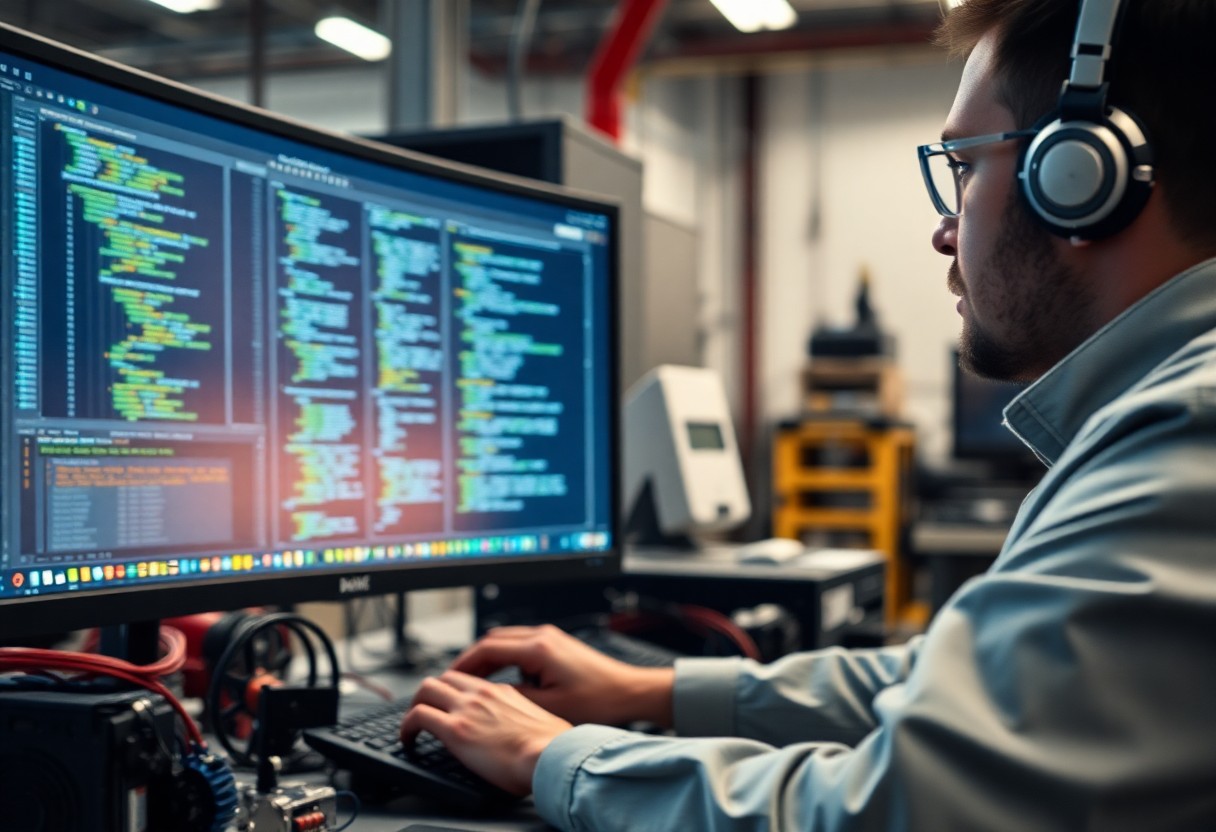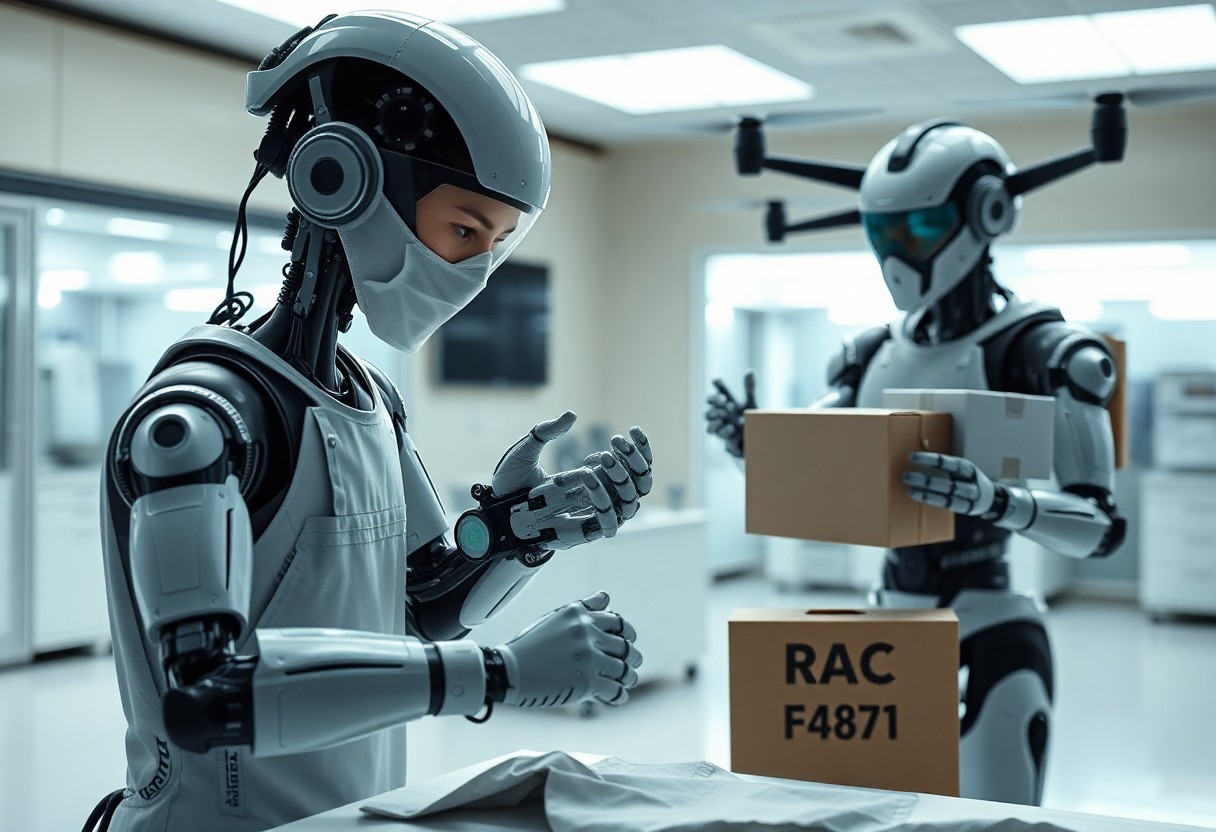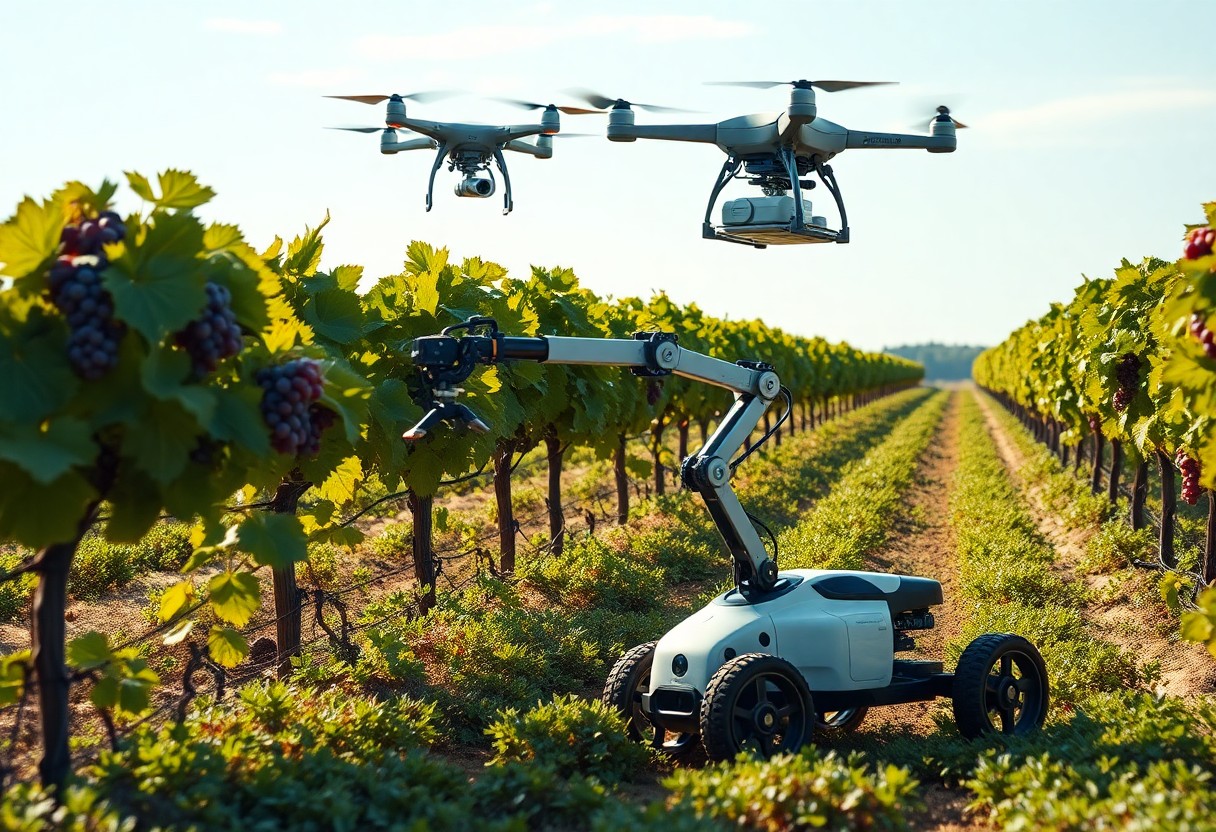You might not realize it, but software plays a fundamental role in managing the technical components of robotics. With advancements in technology, understanding how software integrates with hardware can significantly enhance the performance and efficiency of robotic systems. From inventory management of parts to real-time diagnostics, software streamlines operations and optimizes workflows. To explore the broader implications of software in the field, you can read more about it in Is Software the Future of Robotics? | RoboticsTomorrow.
The Engine Behind Efficiency: Software Systems in Robotics
Through integrated software systems, robotics can achieve unprecedented levels of efficiency. These systems can analyze workflows, optimize decision-making processes, and enhance the overall performance of robotic operations. By leveraging algorithms and automation protocols, you can reduce manual input and streamline tasks, allowing for quicker, more accurate results. Such capabilities not only cut down on operational time but also lead to significant cost savings, making your robotic projects more viable and successful.
Streamlining Part Inventory Management
Efficient part inventory management is facilitated by advanced software solutions that can track, classify, and monitor your technical parts in real-time. Automated systems provide you with up-to-date information on stock levels, reorder notifications, and predictive analytics to help prevent shortages. This hands-off management style frees you to focus on more complex aspects of your robotics projects, ensuring you always have the necessary parts available when needed.
Real-Time Monitoring and Data Analytics
Utilizing software for real-time monitoring and data analytics enables you to gain critical insights into your robotics parts and their performance. You can track usage patterns, identify potential issues before they escalate, and efficiently allocate resources. This data-driven approach not only boosts productivity but also enhances the longevity of your robotic systems by ensuring that they are always running at optimal levels.
By harnessing data analytics, you transform raw information into actionable insights. For example, if a certain part consistently shows signs of failure based on historical data, predictive analytics can alert you to potential replacements or upgrades before a disruption occurs. Additionally, performance metrics can guide your investment in new technologies, ensuring you allocate funds towards the most impactful components. This proactive stance not only enhances the reliability of your robotic systems but also informs your future strategic decisions, positioning you for success in a rapidly evolving tech landscape.

Bridging the Gap: Software Integration with Hardware
Integrating software with hardware in robotics creates a harmonious interaction that allows machines to perform complex tasks autonomously. This integration enables your robot not only to follow programmed instructions but also to adapt to changes in its environment. As a robotics engineer, ensuring seamless communication between your software and the hardware components is important for optimal performance and reliability.
The Importance of Compatibility
Compatibility between software and hardware can significantly impact your robot’s efficiency. Different components, such as sensors, actuators, and control boards, must communicate effectively for data transfer and processing. Selecting hardware designed specifically for your software environment ensures that all parts work in unison, maximizing the potential of your robot.
Overcoming Integration Challenges
Integration challenges often arise due to discrepancies in communication protocols and data formats. You might encounter issues that hinder your robotic system from interpreting information correctly or responding as intended. Identifying these discrepancies early on is important for successful implementation, especially when dealing with various manufacturers and technologies.
To overcome these integration challenges, you can adopt a modular approach to design, allowing for easy upgrades and replacements. Utilizing open-source software or middleware can facilitate smoother communication between diverse hardware components. Engaging in thorough testing and validation throughout the development stages helps uncover potential integration issues, enabling you to address them proactively. Collaboration with hardware manufacturers may provide technical insights and support, streamlining the integration process and ensuring that all parts of your robotic system are finely tuned to work together efficiently.
Evolving Landscapes: The Future of Automation Software
The automation software landscape is continuously adapting, driven by advancements in artificial intelligence, machine learning, and the Internet of Things (IoT). As these technologies evolve, you will see automation software becoming more integrated and user-friendly, allowing for seamless interaction between various components of robotic systems. The automation software of the future will not only enhance operational efficiency but also provide predictive capabilities, thereby transforming how industries approach robotics and automation.
Trends Shaping Robotics Software Development
In recent years, trends in robotics software development emphasize modularity and interoperability. As you look at the evolution of software for robotics, you’ll notice the emergence of open-source frameworks that facilitate collaboration and innovation within the robotics community. These trends enable you and your team to build on existing solutions, accelerating the development of sophisticated automation applications tailored to your specific operational needs.
Predictive Maintenance and Adaptable Systems
Predictive maintenance is becoming increasingly vital in robotics. By utilizing advanced analytics and real-time data, you can foresee potential failures before they occur, allowing your systems to remain functional and efficient. Adaptable systems further enhance this capability by adjusting their operational parameters in response to changing conditions or detected anomalies, significantly reducing downtime and maintenance costs.
Incorporating predictive maintenance tools into your robotics systems also means leveraging machine learning algorithms that analyze historical and real-time data to identify patterns indicative of wear and tear. For example, industrial robots equipped with sensors track their performance metrics and utilize analytics to signal when maintenance is necessary. This proactive approach ensures that you can schedule repairs during off-peak hours, minimizing disruptions to your operations. As adaptable systems evolve, their ability to engage in self-analysis and make real-time adjustments will lead to increased longevity, efficiency, and productivity for your robotic applications.
Navigating the Complexity: Insight from Industry Experts
Industry experts emphasize the significance of collaboration among software engineers, robotics technicians, and project managers to successfully navigate the complexities of robotics systems. By integrating various perspectives, you can address challenges more effectively and optimize performance in managing technical parts. These insights highlight the necessity of cross-disciplinary communication and the need for adaptable strategies in an ever-evolving technological landscape.
Lessons from Robotics Pioneers
Robotics pioneers like Rodney Brooks and Gill Pratt illustrate the importance of iterative prototyping and user feedback in software development. Their experiences demonstrate how a hands-on approach fosters rapid improvements and the refinement of your robotics systems. By learning from their journeys, you can better appreciate the important role of flexibility and adaptability in your projects.
Strategies for Successful Software Implementation
Implementing software effectively in robotic systems involves structured planning, continuous testing, and stakeholder engagement. Techniques such as agile methodology and regular debugging sessions can help ensure that your software effectively communicates with hardware components. Successful projects often showcase a strong feedback loop where real-time data from operations informs software updates, allowing for a more refined and efficient system.
Adopting agile methodologies promotes adaptability and quick responses to unexpected challenges throughout the development process. Break your projects into smaller, manageable sprints, which allow you to continuously gather feedback and make improvements based on real-time data. Engaging stakeholders, including users and technicians, throughout the implementation process facilitates open dialogue and collaboration, ensuring your software aligns closely with operational needs. Integrating these strategies can significantly enhance the reliability and functionality of your robotics systems, driving your project’s success and sustainability.
Practical Tools: Essential Software Solutions for Robotics
Familiarizing yourself with necessary software tools can significantly enhance your ability to manage technical parts in robotics. These practical solutions streamline various processes such as part selection, inventory tracking, and performance analysis. By incorporating user-friendly interfaces and cloud-based functionalities, modern software applications enable seamless collaboration among your team members while ensuring accuracy and efficiency in part management. From CAD software for design to inventory systems tailored for robotics, leveraging the right tools can take your projects to the next level.
Top Software Applications for Managing Technical Parts
Several software applications stand out in the robotics field for managing technical parts effectively. Platforms like SolidWorks and Autodesk Inventor excel in computer-aided design, allowing you to create and modify complex component designs. In addition, specialized inventory management systems like Fishbowl or SAP Business One cater specifically to tracking robotic components, helping you maintain an organized stock profile. These applications provide a comprehensive toolkit for anyone looking to optimize their robotics projects.
Evaluating Software Performance Metrics
Assessing software performance metrics is vital for informed decision-making in robotics projects. Metrics such as system responsiveness, uptime, and user satisfaction reveal how effectively the software serves your needs. Additionally, APIs can help you integrate various tools and improve workflow. Developing a habit of regularly reviewing these metrics allows you to identify areas for improvement and make upgrades when necessary, ensuring your technical parts are managed with maximum efficiency.
To effectively evaluate software performance metrics, consider employing tools like Google Analytics for user interaction insights and system monitoring solutions that track software uptime and response time. Establish benchmarks for each metric, based on your operational needs, enabling you to compare current performance against past data. Regular reviews of these metrics enable you to pinpoint inefficiencies and highlight areas where software can be enhanced or replaced. This ongoing assessment process will keep your robotic systems running smoothly, positioning your projects for success in an increasingly complex landscape.
Summing up
To wrap up, understanding the role of software in managing technical parts for robotics can significantly enhance your efficiency and effectiveness in the field. By leveraging software solutions, you can streamline operations, ensure precise control over components, and facilitate seamless integration across systems. Your ability to utilize software tools will empower you to innovate and optimize robotic functions, leading to improved performance and reliability. Embracing this technology will not only enhance your skills but also keep you at the forefront of advancements in robotics.







